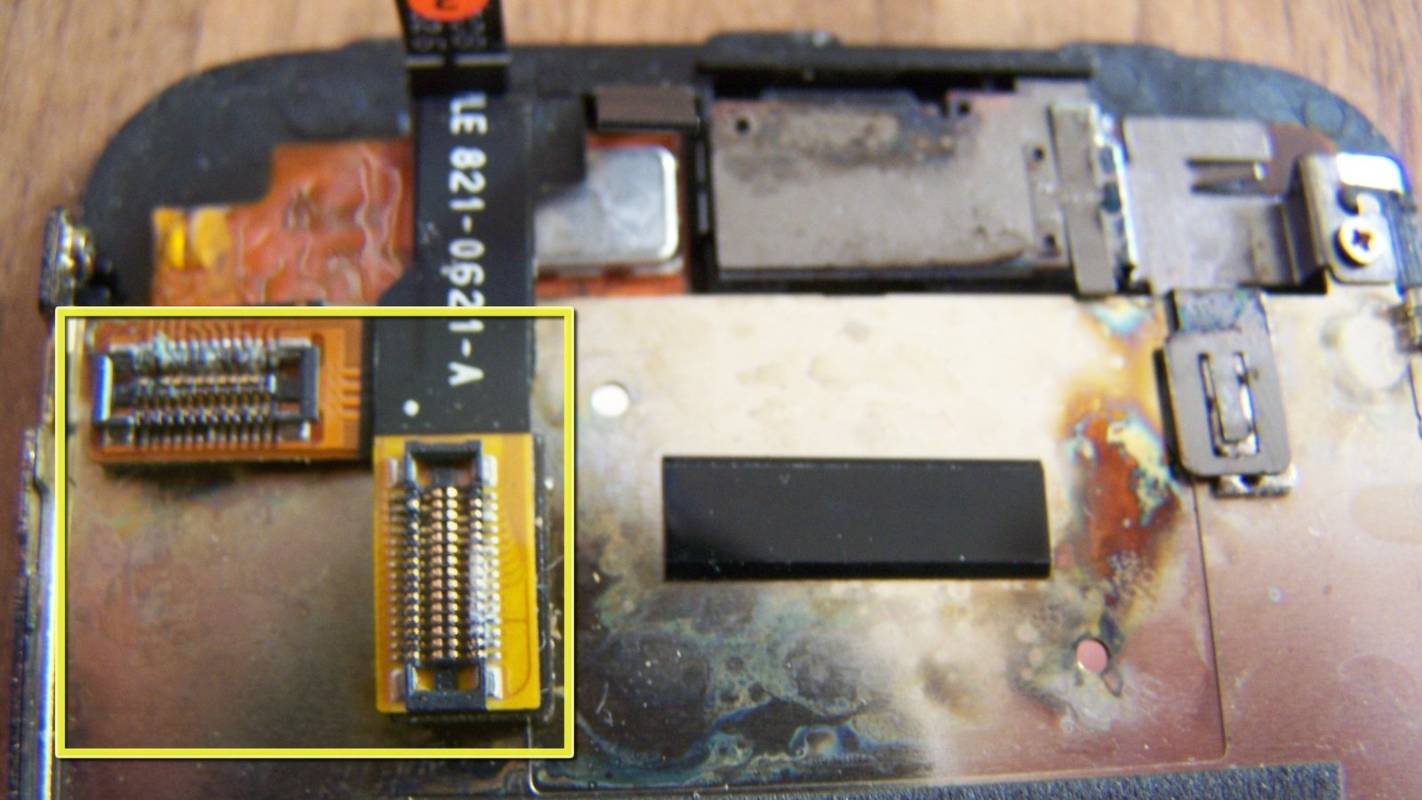Affiliate links on Android Authority may earn us a commission. Learn more.
Friendly reminder: Your phone’s water resistance rating doesn't mean much
Published onAugust 7, 2022
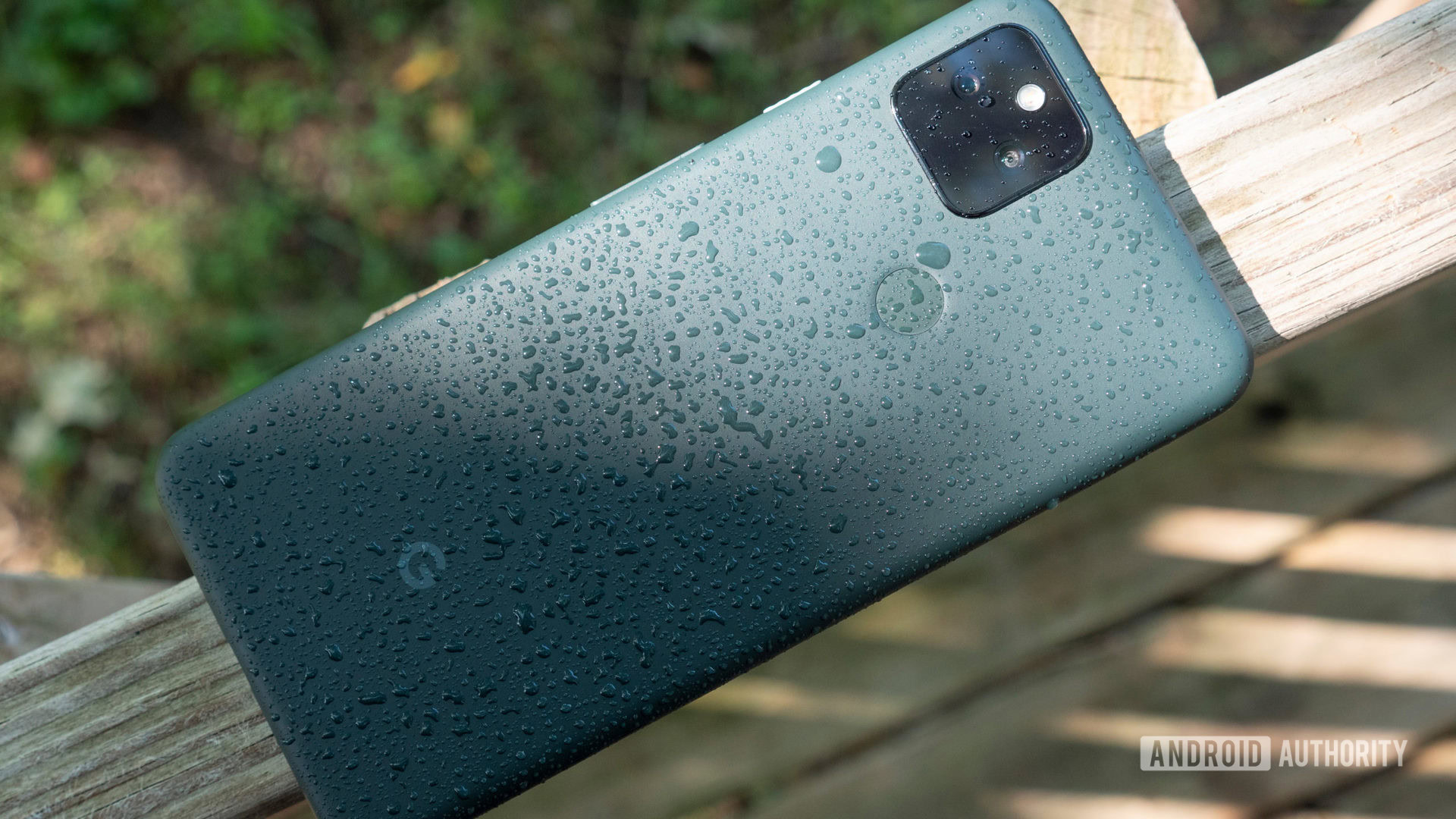
Like millions across sun-scorched Europe, I’ve been seeking refuge from the heat at my local pool. I spotted more than a few people using their phones, smartwatches, and even headphones in or around the water. At least one guy was casually drenching his Galaxy S21 to record his friends’ waterslide antics. He shared the results with his buddies, proudly reassuring them that “it’s alright, it’s waterproof.” That made me cringe a little.
Your phone is not waterproof, and depending on how long you’ve had it, it may not even be water resistant at all. Let’s talk about water-resistant gadgets and some of the misconceptions around them.
Also read: A guide to the best rugged phone cases
Your “waterproof” phone is not waterproof
Despite what some ads imply, smartphones are not waterproof. That means liquid will reach the inside of the device if it exerts enough pressure. Pressure increases with depth, so one common way to learn this hard lesson is to drop the device to the bottom of a pool or water body. A strong splash, a wave, a jet of water, or simply moving the phone too quickly through water can also increase pressure over its resistance threshold. It only takes a few drops of water to ruin a device, though the damage may not manifest right away.
Your phone may be water-resistant, but it isn't waterproof — an important distinction.
For this reason, phone makers are careful to specify, in the fine print, that their products are water resistant, not waterproof. Also, they’re usually upfront about the Ingress Protection (IP) standard their products have been tested against. But there’s a twist.
Not all IP68 phones have the same level of water resistance
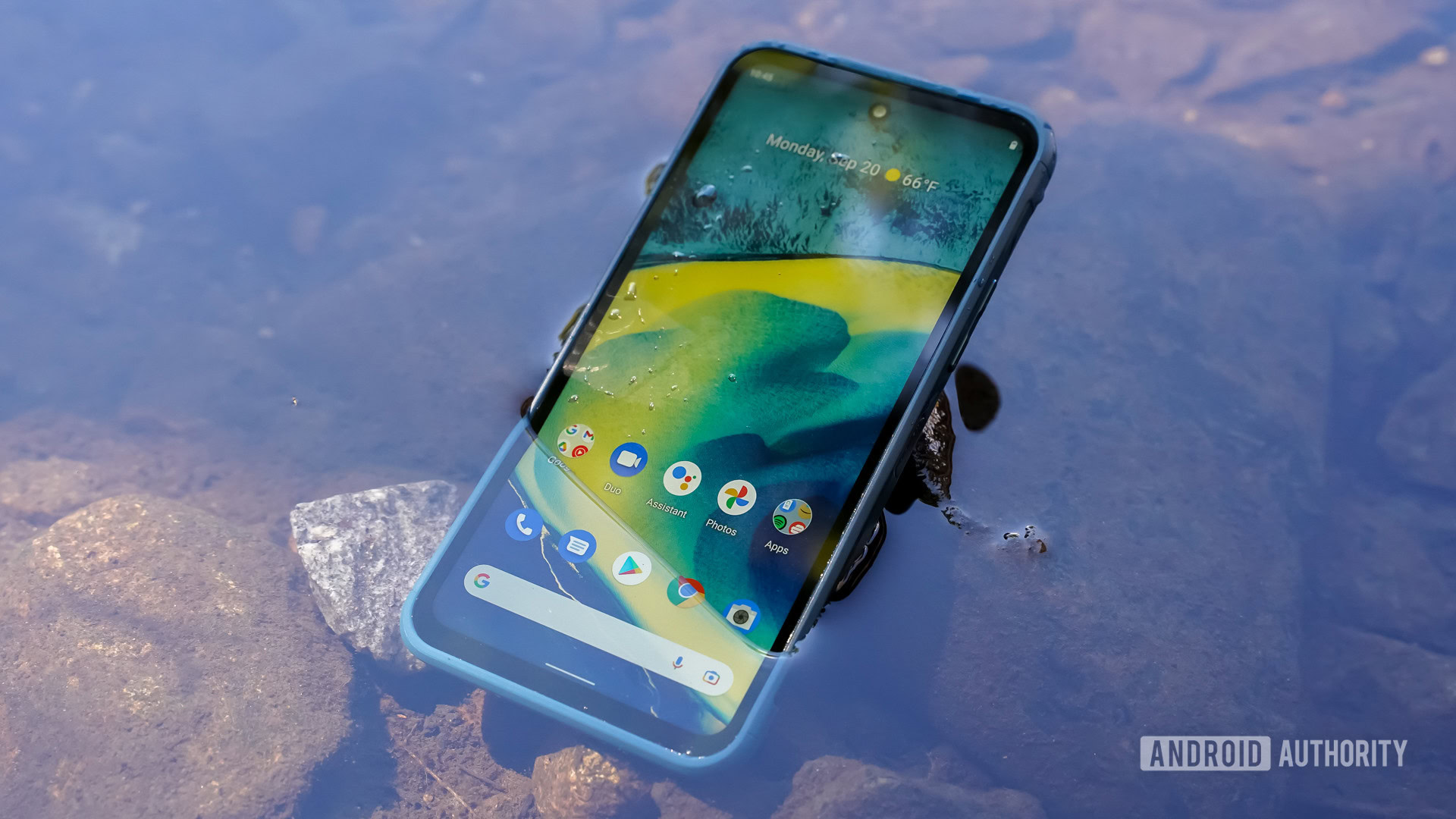
Manufacturers rely on Ingress Protection (IP) ratings to tell users how well a phone can withstand water and dust ingress. The IP68 rating of phones like the Galaxy S22, iPhone 13 Pro, or Pixel 6 Pro is the highest level of water resistance you can get on consumer devices. But confusingly, not all IP68 devices are created equal.
The iPhone 13 series, for instance, is advertised as “splash, water, and dust resistant […] with a rating of IP68 under IEC standard 60529 (maximum depth of 6 meters up to 30 minutes).”
The Galaxy S22 series, also rated IP68, is only advertised to withstand immersion in up to 1.5 meters of water.
Meanwhile, Google says the Pixel 6 series is rated IP68 under the IEC standard 60529 (same as the iPhone 13) but doesn’t actually specify at what depth the phones have been tested.
Even with the same IP rating, manufacturers advertise different survivable depths.
Here’s how the IP68 rating is determined under the IEC standard 60529. As you can see in the video below, at around the four-minute mark, the product is simply placed in a still freshwater tank and left to sit there for 30 minutes. If no water is detected inside it afterward, the phone gets the IP68 stamp of approval. It’s hardly an arduous test or one that accounts for the diverse ways people use their phones.
As for the reason the iPhone 13 is rated for 6 meters of water, while the Galaxy S22 only claims 1.5 meters, that’s because the IEC standard 60529 allows it. It only requires the depth to be greater than one meter and the duration longer than 30 minutes. Manufacturers can specify their own targets beyond that.
Your water-resistant phone may not be water resistant at all
While many people understand the difference between water resistance and waterproofness and what IP68 roughly means, most don’t realize that phones and other electronics are only guaranteed to be water resistant when you take them out of the box. As little as a few days of normal use can render a supposed water-resistant phone unprotected.
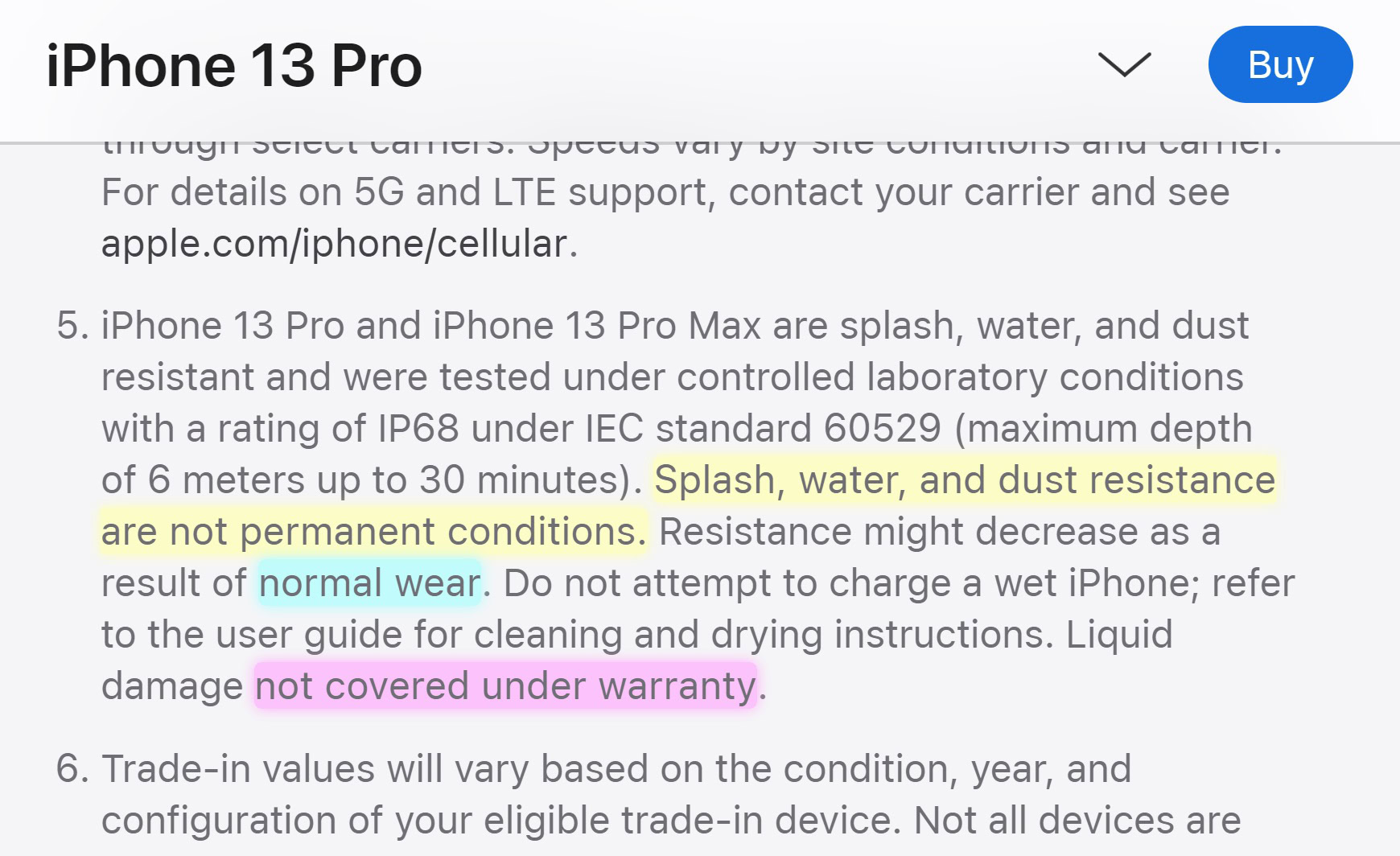
Here’s what can reduce the water resistance of a phone, according to product pages from the biggest phone makers:
- Apple: “normal wear”
- Google: “normal wear and tear, device repair, disassembly or damage,” as well as “dropping your device” and “chips or cracks in your phone’s body or screen.”
- Samsung: “beach or pool use”
- Huawei: “normal use”
- Oppo: “normal wear”
Using your phone normally can ruin its water resistance.
Because of this, none of the big manufacturers provide any kind of warranty related to water damage. In fact, they explicitly warn against placing any stock in their products’ water resistance claims and specify that water damage will not be repaired under warranty. They just do it in the fine print — and place an asterisk on the big bold water resistance claims they make in marketing materials.
Why does water resistance degrade over time?
To make a phone water resistant, manufacturers first attempt to pack everything as tightly as possible and limit the number of points water can infiltrate. Then they use glue to form watertight connections between components, as well as various gaskets, seals, and tapes made of adhesives, silicone, or rubber. In fact, one of the reasons phones are so difficult to repair these days is all the glue used to hold components together and water at bay.
Phones are water resistant when they're new, but that's about the only certainty you can have.
The problem is glues and seals naturally degrade over time. They dry out, crack, become crumbly, shrink, or displace, eventually allowing water to work its way in. This happens due to exposure to air, heat, various chemicals from the environment, and mechanical stress.
Now think about what people do to their phones. Besides “normal wear,” here’s a non-exhaustive list of things that are bad for water resistance:
- Drop or bumps
- Deformations (like when you accidentally sit on your phone)
- Cracks in the screen or body, even hairline ones
- Immersion in hot water (shower) or chilly water
- Immersion of a hot phone (like after sitting in the sun) or cold phone (after sitting in an air-conditioned space) in water
- Exposure to chlorine-treated water (like in a pool) or salt water (the sea)
- Lodging of sand or other debris in the phone’s ports
- Exposure to chemicals like alcohol, acids (like vinegary foods), or various solvents (like cosmetic products)
- Any repair or disassembly of the device.
In short, phones are water resistant when they’re new, but that’s about the only certainty you can have.
Can I tell if my phone is still water resistant?
Short of putting your phone through an official IP test, you can’t know for sure whether your device is still protected.
Some apps claim to determine whether a phone is still water resistant. One example is Water Resistance Tester, by developer Raymond Wang. It works by using the phone’s built-in barometer to measure if the pressure inside the phone changes when you apply force to the screen.
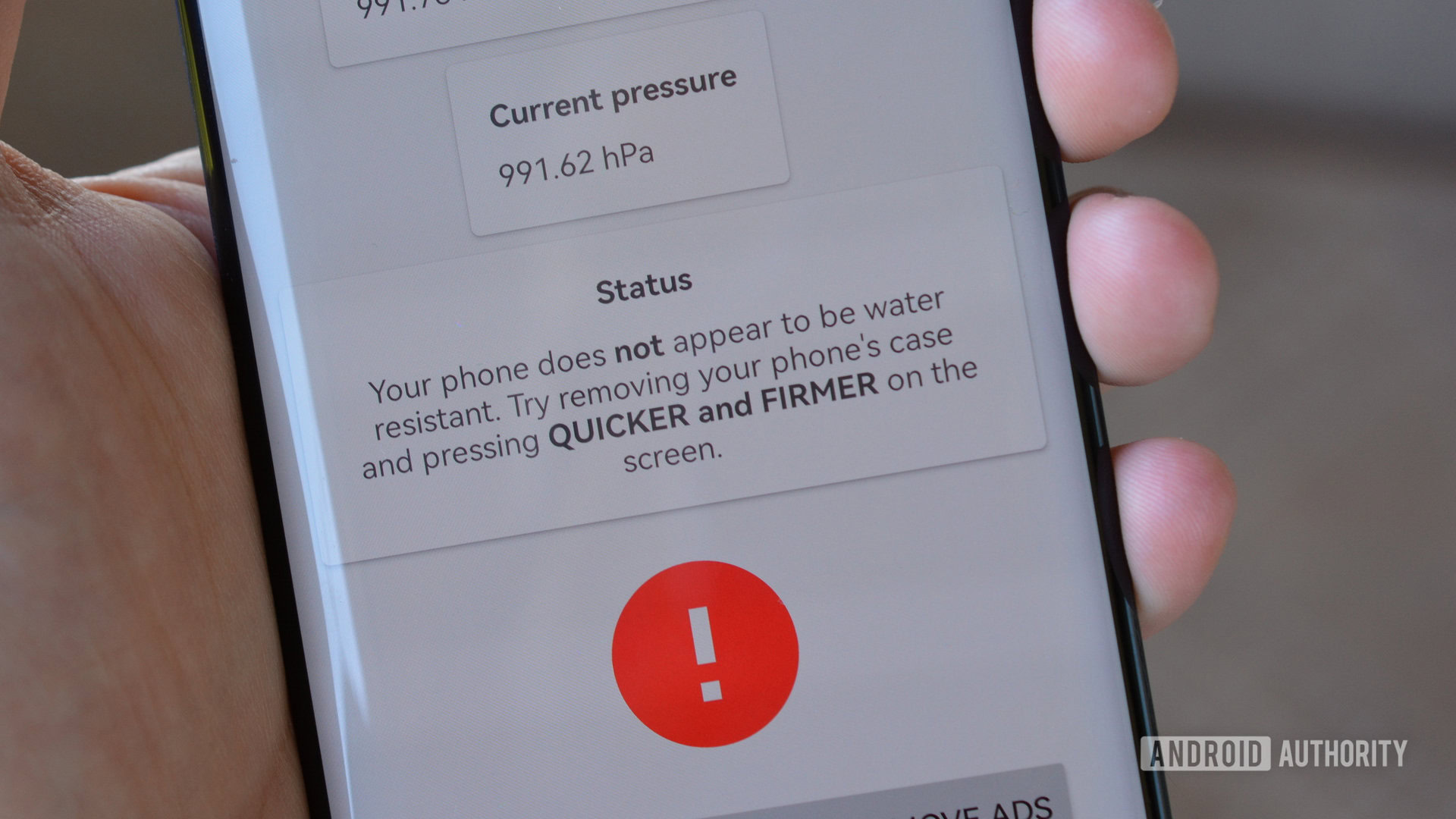
I tested it on my 3-year-old Mate 20 Pro, and it worked as advertised. It said my phone is no longer water resistant, though there’s nothing I could do to check if that’s true.
Unfortunately, unofficial apps like Water Resistance Tester won’t help much in warranty cases or disputes with repair shops. They’ll just give you a little peace of mind if your phone is still protected or warn you if it’s not.
Manufacturers should be more upfront about water resistance
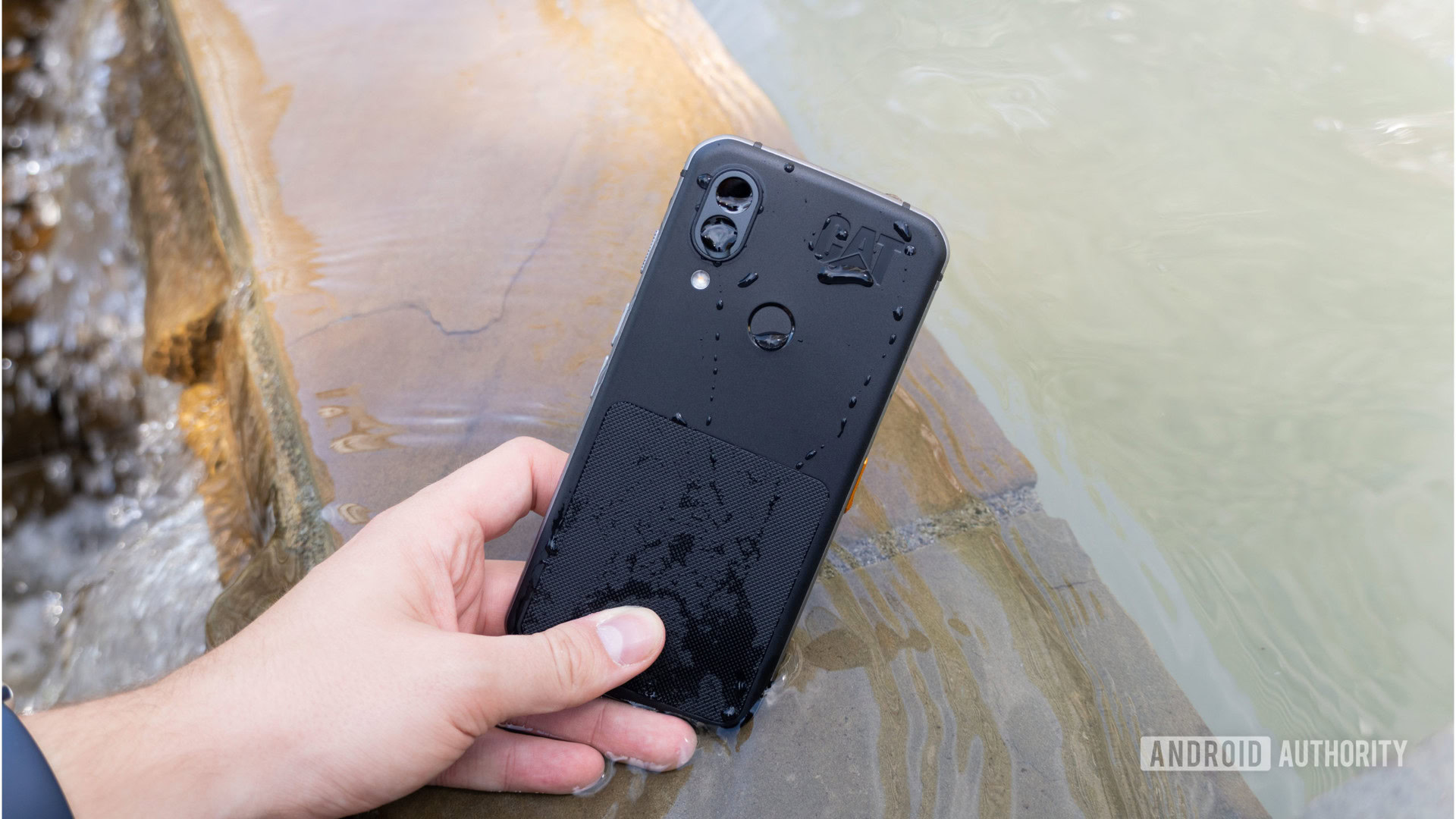
Having some degree of protection against the elements is better than nothing. Over the last few years, IP ratings have become commonplace, not only on high-end phones but increasingly on more affordable devices. At the very least, IP ratings tell consumers that the product they’re investing in has some level of protection against inevitable accidents. Manufacturers deserve credit for this.
The problem is some brands are not content with marketing the protection against accidents. They also want to sell water resistance as a feature that opens new ways to use your phone. Fun at the beach! Pictures in the pool! Scuba diving with your phone! If you believe the marketing, nothing is off limits to some of these phones. It turns out a lot of people believe the marketing and end up with damaged devices.
No, Xiaomi, you can't use that phone under the sea.
Just last month, Samsung admitted it had misled Australian consumers with a series of ads that suggested its phones could be used in pools and seawater. The company agreed to pay a fine of almost $10 million.
Sometimes the ads go literally overboard. Here’s a video Xiaomi published last year to promote the IP68 rating of the Mi 11 Ultra. It implies the phone can be used deep under the sea, with not even a tiny asterisk to warn customers that’s not actually the case.
Even Apple, under the slogan “Relax, it’s iPhone,” has a recent video implying that the chlorinated water of a pool is A-OK. Well, at least there’s no diving involved here.
Also read: The best water-resistant phones
Ultimately, a splash from the pool or an accident with your drink will probably not kill your phone. The key word is “probably.” Don’t take marketing as gospel, don’t forget what IP68 (or any lab-tested rating) actually means, treat your devices with a little care, and have fun at the pool. Just don’t forget the sunscreen.
